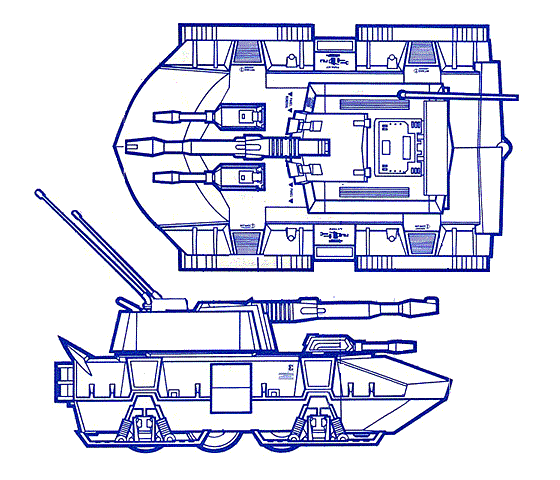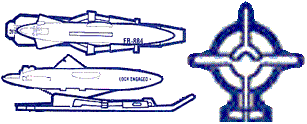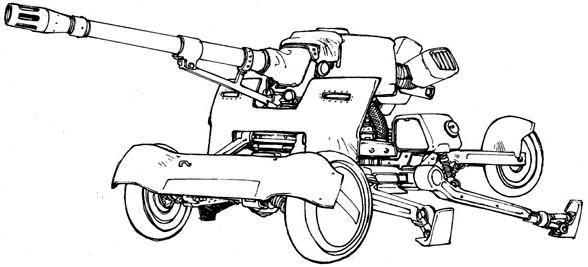 | ("Tank Winter"). |  | |||
|---|---|---|---|---|---|
| US Militry Intelligence got the first hints of this tank around 2004; The intelligence community was confused about the vehicle; "Why would the Russians be developing a tank with wheels?" The matter remained unresolved until 2 years later, when the Russians, The main weapon was a particle beam cannon, at the time an experimental weapon unsuitable to general militry use due to the high heat generated; In Antarctica, normal types of guns would have been useless, due to the extreme cold contracting the metal parts around each other, jamming them, but the particle beam cannon would have been ideal since it operates primarily with electricity and had no solid physical projectile. Powerplant. The T3-81 Tahk Zima (Winter Tank's) main powerplant was a nearly unprecedented (in a tank of this class) 500 cubic inch jet engine; If the tank had been developed a few years later it probably would have been powered by a nuclear power plant. Later variants are powered by a true nuclear powerplant, making these the only ones so built. Fuel Economy. Normally a bigger engine, a heavier vehicle, and a higher speed causes lower fuel economy, and in the road configuration this is still true but on snow and ice the Winter Tank actually got about 100% better fuel economy than its various counterparts; In fact, it's miles (3) to the gallon, rather than gallons to the mile (around 5 in the Winter Tanks class and as much as 100 in heavy MBT's such as the Abrams). Modern Winter Tanks use a true nuclear powerplant, although a very small one with extremely limited chances of accident or penetration. Motive Systems. The Winter Tank uses a most unusual and sophisticated motive system; A quartet of skis help to spread the tank's weight out over the snow (along with the underside of the hull though to a lesser extent), while the 8 wheels grabbed on the snow dragging the tank along. Because the Winter Tank "floated" on snow, it could move VERY quickly, up to 250 mph on straight level terrain. When the tank's blueprints were confiscated as reparations for the Antarctica misadventure, the skis were lengthened to turn them into 2 skis by the International Community, reducing the footprint a further 8% but without reducing the effective speed. Skies. The primary intended motive system was the skies, in so far as the tank was intended for use on snow and ice. At just over half the length of the tank and just under 1/4 the width (combined), they widened the footprint of the tank by 38%, making them suitable in all but the softest of snow. Operations on ice were a little more chancy, but generally if a human can skate on the ice, the tanks can operate on it. Road Wheels. The skies reduce the effective weight, but did not provide momentum; The was the job of the 8 road wheels, which would pull the tank along giving it up to 200 mph capability in ideal conditions, and at bare minimum 40 mph under all but the most extreme conditions (bringing the tanks to the edge of their operational limit). In addition, detachable rubber treads could be installed to give the tank additional traction if needed. Hull. The underside of the hull was designed like a wide-bottom boat, to increase the effect of the skies in weight distribution; The use of a slightly sharp bow allowed it to glide over snow a lot easier. The tanks can NOT float on water as-is, they're simply too heavy. Based on their weight, they'd have to be a little over 4 times their current size (or on water with a salinity 5 times ocean water) to safely float. Anti-Gravity Pods. After the Rain Of Death, the Russians worked very quickly to secure T'sentraedi Mecha and equipment; Several hundred unarmed and unarmored hover pods were scavenged, and many of these were stripped for their anti-gravity pods. The entire remaining Winter Tank fleet was retrofitted with 2 of these pods to give them limited flight abilities, though these proved better at getting the tanks out of bad situations than in getting them through tough ones. Electronics. The winter Tank was painfully short on electronics, consisting only of standard radios and civilian grade radar; The radio gave approximately 500 mile range and auto encryption, but did not allow multiple crew members to be on the same circuit. The radar had a 200 miles range and 250 target track, and did not have blue force tracing capabilities. The reason for this was secrecy; By using civilian grade radar, the development of the tanks was far more easily hidden. The radios used were taken from pre-existing stocks of infantry radios that were slated for recycling; On paper, they were in fact recycled. After the Rain Of Death most were upgraded to include thermographic and night vision equipment, and in fact mountings were pre-built to allow this, since the need for secrecy had changed significantly. Survival/NBC Systems. Tragically limited; The Russians didn't put a terribly high priority on their personnel's survival. However, Russian troops were issued warm wx gear (included fur liner for helmets, heavy fur gloves, etc.) and gas masks; The tank was designed around this gear, including larger, easier to manipulate controls, larger than normal hatches, etc. The Winter Tank was fitted with a SIDE boarding hatch, something very rarely seen on tank in general (outside of infantry vehicles) and never in a Russian main battle tank before this. Weapons Systems. The secondary weapons were a pair of 25MM autocannons a pair of SRM Launchers and fairly normal for any tank. The Particle Beam Cannon and Ski Torpedoes however were very new. Particle Beam Cannon. A Particle Beam Cannon essentially works by sucking in air, heating it to plasma, and propelling it forward. The problems with PBC's until the SDF-1's arrival was that they generate INCREDIBLE amounts of heat; In fact, that's specifically how they work. At small scale it's perfectly fine, but anything above a child's toy or specialized scientific equipment was impossible, since the equipment overheats. The Winter Tank had a different sort of problem; Too COLD. As metal gets cold it contracts, meaning parts that enclose each other, like the barrel to the breach, the breech to the lock, etc., compressing each other causing the gun to jam. PBC's not only don't have this problem (because they have no moving parts), their main functional components, wires and electromagnets, work BETTER. The trouble is the heating elements; They in turn don't work as well when the air entering is already super frigid. The solution was genius itself; Use the engine to pre-heat the air. Though the concept was novel and moderately effective, the T3-81's PBC in the end proved to be less than desirable, and the Overtechnology brought by the SDF-1 proved much more effective. Ski Torpedo. The Ski Torpedo is technically not a torpedo at all but rather a lighter medium range missile warhead on a very heavy short rang missile body, mounted to a vehicle-grade ski. The main aiming system was the tank itself, since the missiles couldn't change their course very well, but they could shift up to 10 degrees and could explode their warheads without even touching a specific target. These were fascination but inevitably not terribly useful weapons that were never deployed in any significant numbers in combat, though every country on Earth with the ability to do so at least made a try at replicating the system. Strangely the Ski Torpedoes didn't get mention in the press at all after the sinking of the Argentine fleet, and only the top three most detailed militry interest websites give any mention of them at all (and very little at that) and a dozen or so "third rate" conspiracy websites mention them beyond this; Simply put, they weren't "interesting" enough to mention, a curio to be noticed but forgotten. However, had the fleet landed, they could have been devastating, since their range and destructive power put them in a class all of their own. Fate. The Argentine adventure sent to the bottom of the ocean 8,314 of the 10,000 that were built; 686 survived to make it home, and 1,000 were still in Russia at the time of the battle. Of these, 843 were confiscated as compensation to the international community, as were those on the sea floor (of which only 10% were recovered). Additionally, Russia was prohibited from building new Winter Tanks, though they ignored this restriction; The terms of the settlement allowed them to build the Road Tank (a Winter Tank without skies or fittings), but the Russians added the ski systems anyways. Political Fallout. Officially, the Winter Tanks sank were the property of Argentina, leaving the Russia well insulated; The Russians recovered (mostly as bodies) were "technical advisors," not direct combatants, but the international community was not fooled at all. The settlement with Russia was described as an arms limitation agreement and international press was pressured to downplay the significance, or simply not report it at all, and most complied, saving face for Russia. As for Argentina, the disaster was unprecedented; More men had been killed than during the Falkland Campaign, more tanks and aircraft destroyed, and many more ships sunk. The country entered a short spasm of civil uprising that almost developed into full-fledged civil war, and the sitting president at the time was forced to resign (along with over a dozen of the highest ranking army and naval officers). Users. The REF had about 20 of these vehicles (designated Armor, Tundra, Type 2, or AT-2's, and named Dominators) when they departed Terra. They saw limited action during the Atorian Campaign, but really didn't see any during the Regent campaign, and only 2 ever left Tirol during this time. Since then they've been used for policing forces on extremely cold worlds, and road versions used to limited degrees for Regional Forces. Start up mercenries use them in limited numbers, usually not more than a year or two, before selling them off in favor of more modern equipment. Weapons systems in mercenry service varies widely, but UGC allied Regional Forces are universally identical (to increase logistical support and reduce cost of manufacture). Name: Tahk Zima (Winter Tank). Model Type: Winter and Tundra Battle Tank. Class: Snow/Road Tank. Crew: 3; Pilot/commander/Gunner, Gunner/Pilot/Commander, and Commander/Gunner/Pilot. (The second and Third titles are their secondary job, the first title their primary job.) Passengers: None internally but up to 5 riding on the hull. MDC By Location: | |||||
| Tank Hull- Crew Compartment- Rear Jet Thrusters (2)- Turret- Grav Pods (16; 8 each side)- Wheels (8)- | 300 200 150 each 150 150 each 100 each | Skis (4)- FGU-20 Auto Cannon- 25MM Auto Cannon- 32MM Auto Cannon- MM-60- SRM Launchers (2)- | 100 each 150 100 50 10 SDC 200 each | ||
| Notes: Usual penalties apply. Speed and Statistical Data: | |||||
| Speed: 200 MPH max. NOTE: Due to the use of gravity pods, there is NO physical terrain that they can't traverse sort of hills over 15 feet high and 50 degrees; Even then, they can cover it with a running start, but this is the upper end of their limits. They are typically used to get out of bad situations only; Grav pods WILL work over water. Hovering Height: From 2 to 15 feet: WARNING: Higher flight causes a 02% loss of piloting control per foot (-30% at maximum 15 foot hover height). Maximum Range: 3,000 miles (483 km) Height: 9 feet, 6 inches (2.9 meters) Width: 10 feet 6 inches (3.2 meters). | Length: 30 feet (X meters) (the gun is shorter than the overall tank). Weight: 60 tons (57.2 metric tons) Power System: Chivoski 23 jet engines; Output: 65,000 Kwh Hover System: Normal grav pods. Cargo Capacity: Crew supplies only; About a half ton of various cargos are known to be tied onto the hull, but this is not the true purpose of the tank. Also, such cargo is subject to any environmental factors (including chemical, biological, and nuclear/Reflex weapons). Cost and Availability: Each tank costs 610,000credit. Availability: Always available. Black Market Cost: 150,000credit. If fitted, any extra weapons systems will add to the cost of the tank. | ||||
| Weapon Systems: | |||||
| 1. BC-8 Particle Beam Cannon: The BC-8 was the first PBC to see operational deployment, though in the ill-fated Antarctica campaign. A few fired from the transport ships in an attempt to interfere with CUNNINHAM'S blockade, and at least one confirmed kill was made (of a missile), but overall these were not very good, and nobody uses them anymore.MD: 4D6 times 2. Blast Radius: 15 feet Range: 2,000 feet. Rate of Fire: Per gunner's attacks per melee. Payload: Unlimited. 2. Twin Forward 25MM Auto Cannons: Controlled by the driver, the auto cannons are primarily for anti-personnel defense. They fail in the -25 degree summer highs of Antarctica, though, so why the Russians selected these is deeply debated. MD: Short Burst: 1D6; Medium Burst: 2D6; Full Melee Burst: 4D6 Range: 3,200 feet. Rate of Fire: Per driver's APM. Payload: 4,000 rounds. | 3. 2 Short Range Missiles: One on either side of the turret. Primary Purpose: Defense/Anti-Aircraft Secondary Purpose: Offense/Anti-Armor Damage and Range: Varies by type used. Rate Of Fire: One at t time per pilots attacks per melee. Payload: 2 total. Takes 30 minutes to fully reload. 4. Ski-Torpedoes (2): By all measures, the Ski Torpedo really is a fascinating weapon that, in the Antarctica campaign, probably would have been a game changer lasting to the present day. A very heavy short range missile body was fitted with a lower-yield medium range missile warhead and a simplified control systems, making it capable of punching through bunkers. Unfortunately, 99% of the Ski Torpedoes ended up at the bottom of the ocean, and very few were recovered until a decade after the Invid Armistice. (The American CIA and British MI-6 secretly recovered a dozen during a joint operation to recover some of the tanks themselves for study.). Primary Purpose: Offence/Anti-Bunker Secondary Purpose: Offense/Anti-Armor Damage and Range: Varies by type used. Rate Of Fire: Volleys of 1, 2, 3, 4, 6, 12, 18, or all 24 per launcher per pilots attacks per melee. Payload: 24 per launcher (96 total). Takes 10 minutes to fully reload per launcher (extra SRM's can be carried inside). | ||||
| REF/Regional Forces Variant: | |||||
1. L-08 Rail Launcher. Nicknamed "The Sniper" for their use to precisely take out aircraft and make pinpoint shots on Mecha, this normally semi-fixed position (towed) rail launcher system is a semi automatic weapon system. The LIMA-08 (said "LEE-MA zero
Purpose: Heavy Assault. Weight: 2 tons Damage and Range: Varies by type used. Rate Of Fire: Per gunner's attacks per melee. Payload: 10 per magazine (loads from the right side). Bonus: Either quadruples the normal range of the missile OR triples it and adds +3 to strike. Cost and Availability: 20,000credit each; By Assignment Black Market Cost: Not available. 2. L-02 Rail Launcher: The L-02 is normally mounted on a carriage in a tandem quartet, but on the Dominator they are dependently mounted on separate carriages; that means they will target the same object (as determined by the fire control computer. Like the L-08, the gun has been modified for continuous feed. Designed for Micro-Missiles. Purpose: Heavy Assault. Weight: 1.2 tons Damage and Range: Varies by type used. Rate Of Fire: Per gunner's attacks per melee. Payload: 2,000. One magazine serves both guns. Bonus: Either quadruples the normal range of the missile OR triples it and adds +3 to strike. | 3. Short Range Missile Launcher: The Dominator is equipped with a short range missile launcher. Purpose: Assault. Damage and Range: Varies by type used. Rate Of Fire: 1, 2, 6, or 12 per gunners attacks per melee per gunner's attacks per melee. Payload: 36. 4. Shields: A basic full-force barrier field. MDC: 200 Range: Self + about 20 feet. Payload: Technically unlimited; Attacks Per Melee: Technically unlimited; Requires one melee action to raise and lower. 4. Ski-Torpedoes (2): Ski Torpedoes can still be used if available and desirable. They rarely are, though. Primary Purpose: Offense/Anti-Bunker Secondary Purpose: Offense/Anti-Armor Damage and Range: Varies by type used. Rate Of Fire: Volleys of 1, 2, 3, 4, 6, 12, 18, or all 24 per launcher per pilots attacks per melee. Payload: 24 per launcher (96 total). Takes 10 minutes to fully reload per launcher (extra SRM's can be carried inside). | ||||
| Features: | |||||
|
| ||||
| |||||


